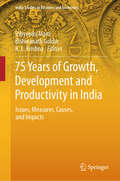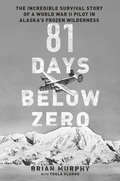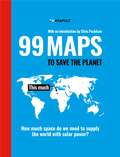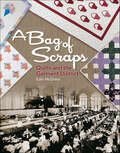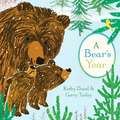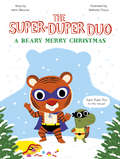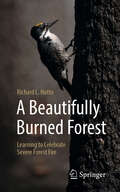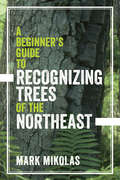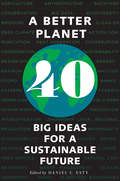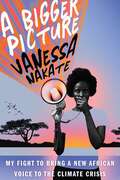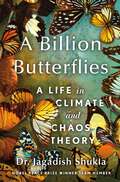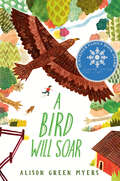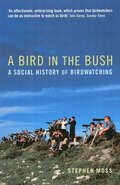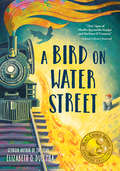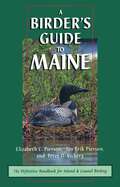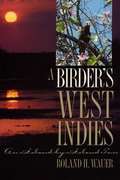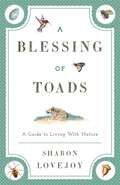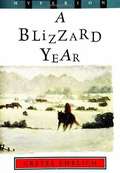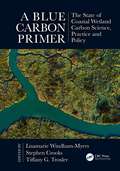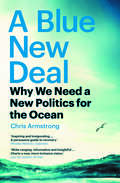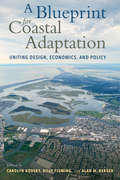- Table View
- List View
75 Years of Growth, Development and Productivity in India: Issues, Measures, Causes, and Impacts (India Studies in Business and Economics)
by K. L. Krishna Dibyendu Maiti Bishwanath GoldarThis edited volume documents through its 75 years post-independence, the developmental complexities, economic achievements and challenges unique to India, given its vast population and regional, cultural, and climatic diversities, with simple illustrations, making them accessible to readers with varying levels of expertise. Since gaining independence, the Indian economy has embarked on a distinctive journey, navigating through a series of economic policy experiments in diverse economic landscapes. This distinct trajectory has not only accelerated its pace of economic growth but also addressed a myriad of developmental issues, from poverty to well-being, with varied degrees of success over the years. The detailed analysis and anecdotal evidence are at the core to show how the country's experience and challenges are different from the linear model of development transition, and must be understood in their own context. The academic papers, both theoretical and empirical, highlight the pace and patterns of sectoral dynamics since independence, unfold the issues and factors affecting development, with a particular focus on the productivity growth of the Indian economy, and showcase debates that may help planning policy for Vision@2047, the year when India would celebrate its centenary year of independence. The book contains 24 chapters divided into ten sections, covering issues related to growth strategies, productivity growth, agricultural transition, growth heterogeneity, labour, rural non-farm sector and migration, social sectors including education and environment, and debates on industrialisation and servicification – the principle features of Indian growth and development story. Given such diverse collection of chapters and discussions in them, the book will find readers across the developmental economics sphere ranging from academics to policy makers as well as industry experts.
81 Days Below Zero: The Incredible Survival Story of a World War II Pilot in Alaska's Frozen Wilderness
by Brian MurphyShortly before Christmas in 1943, five Army aviators left Alaska’s Ladd Field on a test flight. Only one ever returned: Leon Crane, a city kid from Philadelphia with little more than a parachute on his back when he bailed from his B-24 Liberator before it crashed into the Arctic. Alone in subzero temperatures, Crane managed to stay alive in the dead of the Yukon winter for nearly twelve weeks and, amazingly, walked out of the ordeal intact. 81 Days Below Zero recounts, for the first time, the full story of Crane’s remarkable saga. In a drama of staggering resolve with moments of phenomenal luck, Crane learned to survive in the Yukon’s unforgiving landscape. His is a tale of the human capacity to endure extreme conditions and intense lonelinessand emerge stronger than before.
98.6 Degrees: The Art of Keeping Your Ass Alive!
by Cody LundinCody stresses that a human can live without food for weeks and without water for about three days or so. But if the body's core temperature dips much below or above the 98.6 degree mark, a person can literally die within hours. It is a concept that many don't take seriously or even consider, but knowing what to do to maintain a safe core temperature when lost in a blizzard or in the desert could save your life.
98.6 Degrees: The Art of Keeping Your Ass Alive!
by Cody LundinFrom the survival instructor and author of When All Hell Breaks Loose, a guide to surviving fear, panic, and the biggest outdoor killers. Cody Lundin, director of the Aboriginal Living Skills School in Prescott, Arizona, shares his own brand of wilderness wisdom in this highly anticipated new book on commonsense, modern survival skills for the backcountry, the backyard, or the highway. It is the ultimate book on how to stay alive based on the principal of keeping the body&’s core temperature at a lively 98.6 degrees. In his entertaining and informative style, Cody stresses that a human can live without food for weeks, and without water for about three days or so. But if the body&’s core temperature dips much below or above the 98.6-degree mark, a person can literally die within hours. It is a concept that many don't take seriously or even consider, but knowing what to do to maintain a safe core temperature when lost in a blizzard or in the desert could save your life. Lundin delivers the message with wit, rebellious humor, and plenty of backcountry expertise. &“Excellent advice…the obvious product of a man who has gone and done it…well worth reading.&”—Field & Stream
99 Maps to Save the Planet: With an introduction by Chris Packham
by KATAPULT'Terrifying yet funny, surprising yet predictable, simple yet poignant' Chris PackhamA shocking but informative, eye-catching and witty book of maps that illustrate the perilous state of our planet.The maps in this book are often shocking, sometimes amusing, and packed with essential information:· Did you know that just 67 companies worldwide are responsible for 67 per cent of global greenhouse emissions? · Or that keeping a horse has the same carbon footprint as a 23,500-kilometre road trip? · Did you know how many countries use less energy than is consumed globally by downloading porn from the internet?· Do you know how much of the earth's surface has been concreted over?· Or how many trees would we have to plant to make our planet carbon-neutral?Presenting a wealth of innovative scientific research and data in stunning, beautiful infographics, 99 Maps to Save the Planet provides us with instant snapshots of the destruction of our environment. At one glance, we can see the precarious state of our planet - but also realise how easy it would be to improve it Enlightening, a bit frightening, but definitely inspiring, 99 Maps to Save the Planet doesn't provide practical tips on how to save our planet: it just presents the facts. And the facts speak for themselves. Once we know them, what excuse do we have for failing to act?
A Bag of Scraps: Quilts and the Garment District
by Edie McGinnisOh those scrappy quilts with stories to tell and mysteries to solve. Look closely. See this bit of plaid in purple? Here it is again in green ... and yellow ... and red! One can't help but wonder where those bits and pieces came from. Edie McGinnis explores the origins of these delightful scraps: likely from one of the nation's Garment Districts. During the heyday of the Kansas City garment district, it was said that one in every seven women in the country wore a coat or suit made there. You'll learn about the locale and the players: immigrant workers who toiled the factories, designers whose splashy lives became the daily news, and the museum there today. AND where all those scraps went! You'll also find easy-to-follow directions to make eight spectacular scrap quilts - some from old designs, some new - and a handful of fun projects. Best of all: a portion of the proceeds from this book will go to support Kansas City's Garment District Museum.
A Bear's Year
by Kathy Duval Gerry TurleyIn this gorgeous, lyrical celebration about the passing of seasons, readers will follow a mother bear and her cubs through the course of a year. Deep in her den under a snowflake blanket, Mama snuggles her newborn babies. When spring arrives, the bears awaken and emerge from their lair, and as the weather warms to summer, Mama teaches her young ones to fish, gather berries, and dig for roots. Then, in fall, the leaves turn gold, food grows scarce, and the family prepares for hibernation and the coming winter. With spare, accessible text and charming illustrations, here is a sweet, gentle introduction to how bears experience the changing seasons, perfect for the youngest readers and listeners.
A Beary Merry Christmas (The Super-Duper Duo)
by Henri Meunier Nathalie ChouxRory and Sheldon are just regular guys, going to school, having playdates, and, of course, counting down the days until Christmas. But when a furious bear starts wreaking havok in their calm wood, Rory and Sheldon are there to save the holiday as...the Super-Duper Duo! They use their super-duper powers—and their knowledge about animal hibernation—to calm the crazed carnivore and keep the peace. The Super-Duper Duo books mix zany adventure comics and animal facts in exciting young readers that are both hysterical and informative. Just another mission accomplished for the Super-Duper Duo!
A Beautifully Burned Forest: Learning to Celebrate Severe Forest Fire
by Richard L. HuttoIn this book, avian ecologist and former PBS Birdwatch host Richard Hutto challenges conventional wisdom by revealing the hidden beauty and ecological importance of severely burned forests. Drawing on extensive field research and compelling storytelling, Hutto uncovers one of nature&’s best-kept secrets: numerous species—including the black-backed woodpecker and the morel mushroom—thrive in conditions created only by intense wildfires. These and many other fire-dependent organisms have evolved to flourish in charred landscapes, a fact often overlooked by birdwatchers, land managers, and even fire researchers. Blending science, fieldwork, and reflections from a lifelong career, this book has the potential to transform how we perceive forest fires. It offers a fresh perspective on fire&’s role in maintaining biodiversity and invites readers to consider how revised land management practices could benefit both industry and the environment. Written in an engaging and accessible style, this book is ideal for birdwatchers, nature enthusiasts, fire managers, and anyone curious about the true role of fire in our ecosystems.
A Beginner's Guide to Recognizing Trees of the Northeast
by Mark MikolasIdentify maple, ash, oak, and more with easy-to-learn visual techniques. In this friendly and approachable field guide, writer and avid hiker Mark Mikolas shares a unique approach for year-round tree identification. His method, which centers on the northeastern United States where 20 species make up the majority of trees, will prepare readers to recognize trees at a glance, even in winter when leaves and flowers are not present. Mikolas’s secret is to focus on the key characteristics of each tree—black cherry bark looks like burnt potato chips; beech and oak trees keep their leaves in winter; spruce needles are pointed while balsam fir needles are soft and rounded at the ends. Some trees can even be identified by scent. Location maps for each of the 40 species covered and more than 400 photographs illustrating key characteristics make the trees easy to identify. Mikolas also explains how to differentiate between similar and commonly confused trees, such as red maple and sugar maple. A Beginner’s Guide to Recognizing Trees of the Northeast is a book to keep close at hand wherever trees grow.
A Better Planet: Forty Big Ideas for a Sustainable Future
by Daniel C. Esty Ingrid C. BurkeA practical, bipartisan call to action from the world’s leading thinkers on the environment and sustainability Sustainability has emerged as a global priority over the past several years. The 2015 Paris Agreement on climate change and the adoption of the seventeen Sustainable Development Goals through the United Nations have highlighted the need to address critical challenges such as the buildup of greenhouse gases in the atmosphere, water shortages, and air pollution. But in the United States, partisan divides, regional disputes, and deep disagreements over core principles have made it nearly impossible to chart a course toward a sustainable future. This timely new book, edited by celebrated scholar Daniel C. Esty, offers fresh thinking and forward-looking solutions from environmental thought leaders across the political spectrum. The book’s forty essays cover such subjects as ecology, environmental justice, Big Data, public health, and climate change, all with an emphasis on sustainability. The book focuses on moving toward sustainability through actionable, bipartisan approaches based on rigorous analytical research.
A Big Bed for Little Snow
by Grace LinA companion to the Caldecott Honor book A Big Mooncake for Little Star!A heartwarming and tender picture book introducing readers to their first snow, from award-winning, bestselling author-illustrator Grace Lin.When it was quiet, Little Snow grinned and then jumped, jumped, jumped!Little Snow loves the new big, soft bed Mommy made him for the long, cold winter nights. But Mommy says this bed is for sleeping, not jumping! What happens when he can't resist jump, jump, jumping on his new fluffy, bouncy bed?Bestselling and award-winning author Grace Lin artfully introduces young readers to their first snow through striking illustrations and heartwarming moments.
A Bigger Picture: My Fight to Bring a New African Voice to the Climate Crisis
by Vanessa NakateA manifesto and memoir about climate justice and how we can—and must—build a livable future for all, inclusive to all, by a rising star of the global climate movement Leading climate justice activist Vanessa Nakate brings her fierce, fearless spirit, new perspective, and superstar bona fides to the biggest issue of our time. In A Bigger Picture, her first book, she shares her story as a young Ugandan woman who sees that her community bears disproportionate consequences to the climate crisis. At the same time, she sees that activists from African nations and the global south are not being heard in the same way as activists from white nations are heard. Inspired by Sweden&’s Greta Thunberg, in 2019 Nakate became Uganda&’s first Fridays for Future protestor, awakening to her personal power and summoning within herself a commanding political voice. Nakate&’s mere presence has revealed rampant inequalities within the climate justice movement. In January 2020, while attending the World Economic Forum in Davos, Switzerland, as one of five international delegates, including Thunberg, Nakate&’s image was cropped out of a photo by the Associated Press. The photo featured the four other activists, who were all white. It highlighted the call Nakate has been making all along: for both environmental and social justice on behalf of those who have been omitted from the climate discussion and who are now demanding to be heard. From a shy little girl in Kampala to a leader on the world stage, A Bigger Picture is part rousing manifesto and part poignant memoir, and it presents a new vision for the climate movement based on resilience, sustainability, and genuine equity.
A Billion Butterflies: A Life in Climate and Chaos Theory
by Dr. Jagadish ShuklaThe amazing true story of the man behind modern weather predictionConsider a world without weather prediction. How would we know when to evacuate communities ahead of fires or floods, or figure out what to wear tomorrow? Until 40 years ago, we couldn’t forecast weather conditions beyond ten days. Renowned climate scientist Dr. Jagadish Shukla is largely to thank for modern weather forecasting. Born in rural India with no electricity, plumbing, or formal schools, he attended classes that were held in a cow shed. Shukla grew up amid turmoil: overwhelming monsoons, devastating droughts, and unpredictable crop yields. His drive brought him to the Indian Institute of Tropical Meteorology, despite little experience. He then followed an unlikely path to MIT and Princeton, and the highest echelons of climate science. His work, which has enabled us to predict weather farther into the future than previously thought possible, allows us to feed more people, save lives, and hold on to hope in a warming world.Paired with his philanthropic endeavors and extreme dedication to the field, Dr. Shukla has been lauded internationally for his achievements, including a shared Nobel Peace Prize with Al Gore for his governmental research on climate change. A Billion Butterflies is a wondrous insider’s account of climate science and an unbelievable memoir of his life. Understanding dynamical seasonal prediction will change the way you experience a thunderstorm or interpret a forecast; understanding its origins and the remarkable story of the man who discovered it will change the way you see our world.
A Bird Will Soar
by Alison Green MyersA heartfelt and hopeful debut about a bird-loving autistic child whose family's special nest is in danger of falling apart. <p><p> Axel loves everything about birds, especially eagles. No one worries that an eagle will fly too far and not come home—a fact Axel wishes his mother understood. Deep down, Axel knows that his mother is like an osprey—the best of all bird mothers—but it’s hard to remember that when she worries and keeps secrets about important things. His dad is more like a wild turkey, coming and going as he pleases. His dad’s latest disappearance is the biggest mystery of all. Despite all this, Axel loves his life—especially the time he spends with his friends observing the eagles’ nest in the woods near his home. <p><p> But when a tornado damages not only Axel’s home but the eagles’ nest, Axel's life is thrown into chaos. Suddenly his dad is back to help repair the damage, and Axel has to manage his dad’s presence and his beloved birds’ absence. Plus, his mom seems to be keeping even more secrets. But Axel knows another important fact: an eagle’s instincts let it soar. Axel must trust his own instincts to help heal his family and the nest he loves.
A Bird in the Bush: A Social History of Birdwatching
by Stephen MossThis journey through the world of birdwatchers is “a wonderful book. . . . fascinating, often hilarious anecdotes and information” (Daily Mail, Critic’s Choice).Scholarly, authoritative, and above all supremely readable, Stephen Moss’s book is the first to trace the fascinating history of how and why people have watched birds for pleasure, from the beginnings with Gilbert White in the eighteenth century through World War II POWs watching birds from inside their prison camp and all the way to today’s “twitchers” with their bleeping pagers, driving hundreds of miles for a rare bird.“Proves that birdwatchers can be as instructive to watch as birds.” —Sunday Times“Thoroughly researched and well-written.” —The Guardian“Moss knows his subject intimately and writes about it with just the right mixture of affection and occasional quizzicality.” —Sunday Telegraph“It would be difficult to imagine anyone producing a more comprehensive, thoughtful, intelligent and entertaining examination of how people have watched birds at each point in history. In fact, it is one of the few books which might prove such compulsive reading that even a dedicated twitcher might forgo a day in the field to stay at home to finish it.” —Birding World
A Bird on Water Street
by Elizabeth O. Dulemba"Elizabeth Dulemba seamlessly melds a coming-of-age story to the reality of life in a single-industry town. This is a book that sings." — Betsy Bird, School Library Journal blog A Fuse #8 ProductionLiving in Coppertown is like living on the moon. Everything is bare—there are no trees, no birds, no signs of nature at all. And while Jack loves his town, he hates the dangerous mines that have ruined the land with years of pollution. When the miners go on strike and the mines are forced to close, Jack's life-long wish comes true: the land has the chance to heal.But not everyone in town is happy about the change. Without the mines, Jack's dad is out of work and the family might have to leave Coppertown. Just when new life begins to creep back into town, Jack might lose his friends, his home, and everything he's ever known.Dulemba paints a vivid picture of life in the Appalachia in this beautiful story about a boy looking for new beginnings while struggling to hold on to the things he loves most.
A Birder's Guide to Maine
by Elizabeth PiersonFrom inland peaks and forests to the bold and rocky shore, Maine provides habitat for more than 400 species of birds--roughly half of the species that can be found in all of North America. That wealth of birdlife, coupled with spectacular scenery, has ranked the state high on many birders' lists, and few have observed its loons and puffins, owls and eagles, more thoroughly than Liz and Jan Pierson and Peter Vickery.The Piersons, who have been birding together for more than twenty years, coauthored A Birder's Guide to the Coast of Maine in 1981. Deciding it was time to revise and expand the scope of that book, the Piersons spent two years in the field doing research and enlisted the help of another longtime Maine birder - avian ecologist and author Peter Vickery. The result is this fascinating and comprehensive new guide, which covers both coastal and inland areas of the state.Want to see a Willet? Need a Green Heron to cap off a bird list? Salt marshes are the place to look. Where are the best spots to watch hawks? Try York's Mt. Agamenticus or Popham Beach State Park. Broken down by region - from the waters of Biddeford Pool to the mountains of Baxter State Park - this handy book offers birders an in-depth look at the birds characteristic to the various ecosystems found in Maine. It also provides a timetable for birding as well as easy-to-follow directions to the best sites. An invaluable resource, A Birder's Guide to Maine deserves a spot next to the binoculars in any birder's backpack.
A Birder's West Indies: An Island-by-Island Tour
by Roland H. WauerThe West Indies offer so much more than sun, sand, and shopping. This sweeping arc of islands, which runs from Cuba to Grenada and includes the Virgin Islands, teems with a rich diversity of plant and animal life. Up to 40 percent of the plants in some forests are found nowhere else on earth, while the West Indian flyway is a critical link in the migratory routes of many birds. In A Birder's West Indies, Roland Wauer takes you on an island-by-island journey of discovery. He describes the unique natural features of each island and recounts his often fascinating experiences in seeking out the nearly 400 species of birds known in the West Indies. His accounts give insight into the birds' habitats, status, and ecology and record some of the threats posed by human activities. For readers planning trips to the West Indies, Wauer also includes helpful, up-to-date facts about the best times to travel, the kinds of entry and customs systems to expect, the money exchange services available, and general information about weather, food, and accommodations. Filling a unique niche among current guides, A Birder's West Indies offers both professional ornithologists and avocational bird watchers a chance to compare notes and experiences with an expert observer. And for readers who haven't yet visited the islands, Wauer's fluid prose and lovely color photographs will be the next-best thing to being there-and an irresistible invitation to go.
A Blessing of Toads: A Guide to Living with Nature
by Sharon LovejoyThrough this collection of delightful essays and beautiful illustrations, long-time contributor to Country Living Gardner Sharon Lovejoy shares the boundless joys of a country garden. Lovejoy has chosen to focus on the natural world to be found just outside the door, including hummingbirds, caterpillars, and dragonflies, but her informative and witty prose also covers traditional plant care. The very titles of her sketches convey pleasure in the vibrant country landscape and the life that teems within it: &“The Bumble Bee Rumba,&” &“Faeries in the Fuschias (sphinx moths),&” &“Holiday Feasts for the Birds and the Beasts,&” and &“Conversations with Sunflowers.&” This compilation truly is—to borrow another of her titles—&“Something to Crow About.&”
A Blizzard Year: Timmy's Almanac of the Seasons
by Gretel EhrlichEhrlich ventures confidently into new terrain in her eloquent and affecting debut children's novel. Her prose, as pristine and spare as her snow-covered landscape, portrays the quiet drama of the changing seasons -- in both their consistency and unpredictability -- as well as a family attuned to nature's every nuance.
A Blue Carbon Primer: The State of Coastal Wetland Carbon Science, Practice and Policy (CRC Marine Science)
by Lisamarie Windham-Myers Stephen Crooks Tiffany G. TroxlerKey features: Captures the historic context and recent developments in science and policy arenas that address the potential for coastal wetlands to be considered as significant contributors to carbon sequestration Links multiple levels of science (biogeochemistry, geomorphology, paleoclimate, etc.) with blue carbon concepts (science, policy, mapping, operationalization, economics) in a single compendium Concludes with a discussion of future directions which covers integrated scientific approaches, impending threats and specific gaps in current knowledge Includes 7 case studies from across the globe that demonstrate the benefits and challenges of blue carbon accounting Written by over 100 leading global blue carbon experts in science and policy. Blue Carbon has emerged as a term that represents the distinctive carbon stocks and fluxes into or out of coastal wetlands such as marshes, mangroves, and seagrasses. The Blue Carbon concept has rapidly developed in science literature and is highly relevant politically, as nations and markets are developing blue carbon monitoring and management tools and policies. This book is a comprehensive and current compendium of the state of the science, the state of maps and mapping protocols, and the state of policy incentives (including economic valuation of blue carbon), with additional sections on operationalizing blue carbon projects and 7 case studies with global relevance.
A Blue New Deal: Why We Need a New Politics for the Ocean
by Chris ArmstrongAn urgent account of the state of our oceans today—and what we must do to protect them The ocean sustains life on our planet, from absorbing carbon to regulating temperatures, and, as we exhaust the resources to be found on land, it is becoming central to the global market. But today we are facing two urgent challenges at sea: massive environmental destruction, and spiraling inequality in the ocean economy. Chris Armstrong reveals how existing governing institutions are failing to respond to the most pressing problems of our time, arguing that we must do better. Armstrong examines these crises—from the fate of people whose lands will be submerged by sea level rise, to the exploitation of people working in fishing, to the rights of marine animals—and makes the case for a powerful World Ocean Authority capable of tackling them. A Blue New Deal presents a radical manifesto for putting equality, democracy, and sustainability at the heart of ocean politics.
A Blueprint for Coastal Adaptation: Uniting Design, Economics, and Policy
by Carolyn KouskyTens of millions of Americans are at risk from sea level rise, increased tidal flooding, and intensifying storms. The design and policy decisions that have shaped coastal areas are in desperate need of updates to help communities better adapt to a changing climate. A Blueprint for Coastal Adaptation identifies a bold new research and policy agenda and provides implementable options for coastal communities. In this book, coastal adaptation experts discuss the interrelated challenges facing communities experiencing sea level rise and increasing storm impacts. These issues extend far beyond land use planning into housing policy, financing for public infrastructure, insurance, fostering healthier coastal ecosystems, and more. Deftly addressing far-reaching problems from cleaning up contaminated, abandoned sites, to changes in drinking water composition, chapters give a clear-eyed view of how we might yet chart a course for thriving coastal communities. They offer a range of climate adaptation policies that could protect coastal communities against increasing risk, while preserving the economic value of these locations, their natural environments, and their community and cultural values. Lessons are drawn from coastal communities around the United States to present equitable solutions. The book provides tools for evaluating necessary tradeoffs to think more comprehensively about the future of our coastal communities. Coastal adaptation will not be easy, but planning for it is critical to the survival of many communities. A Blueprint for Coastal Adaptation will inspire innovative and cross-disciplinary thinking about coastal policy at the state and local level while providing actionable, realistic policy and planning options for adaptation professionals and policymakers.

